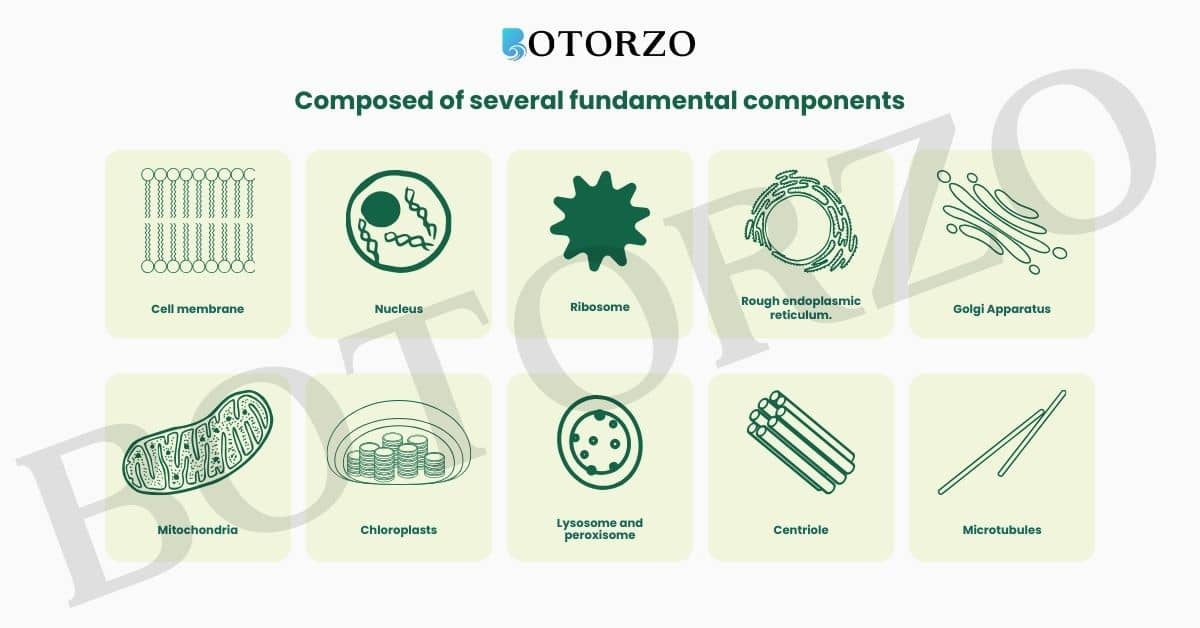What are cell organelles?
Every cell is surrounded by a membrane that serves to maintain a distinct boundary, separating its internal constituents from the surrounding environment. A plethora of intricate biochemical processes are required to sustain the complex form and function of large and intricately structured cells, which are characteristic of multicellular organisms. Eukaryotic cells use specialized membrane-bound entities known as “organelles” within their cellular architecture to effectively compartmentalize and regulate these diverse activities. This is a key feature that distinguishes eukaryotic cells from prokaryotic cells, emphasizing their sophistication. Notably, certain of these organelles can only be identified using electron microscopy.
In summary, cellular membranes function as vital barriers, segregating cellular contents from the extracellular environment. Eukaryotic cells, particularly those of multicellular organisms, employ organelles enclosed by membranes to facilitate the coordination and segregation of diverse biochemical processes, setting them apart from prokaryotic counterparts. Importantly, several of these organelles necessitate the use of electron microscopy for their visualization.
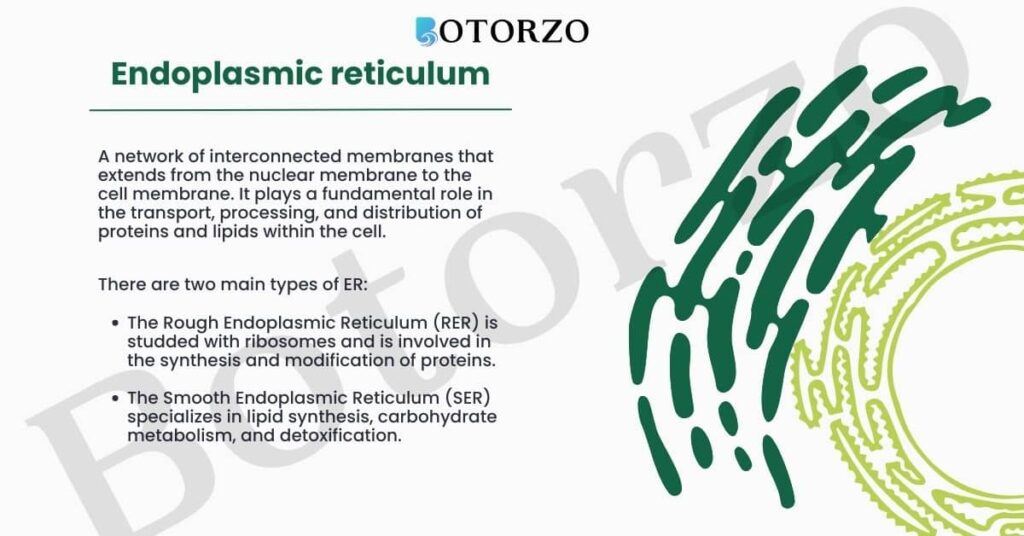
Endoplasmic Reticulum (E.R)
- Smooth Endoplasmic Reticulum (S.E.R)
- Rough Endoplasmic Reticulum (R.E.R)
The rough endoplasmic reticulum (RER), which contains ribosomes for protein synthesis, and the smooth endoplasmic reticulum (SER), which produces lipids, make up the intricate network of membrane-bound structures known as the endoplasmic reticulum (ER). These organelles are essential for the synthesis of proteins, the synthesis of lipids, and the development of cell membranes. The ER also makes it easier for substances, especially proteins, to move throughout the cell and between the cytoplasm and the nucleus. Detoxification in vertebrate animal liver cells depends on the SER. Although different cell types have different appearances, the endoplasmic reticulum (ER) always forms a network that provides a structural framework for a variety of biochemical activities.
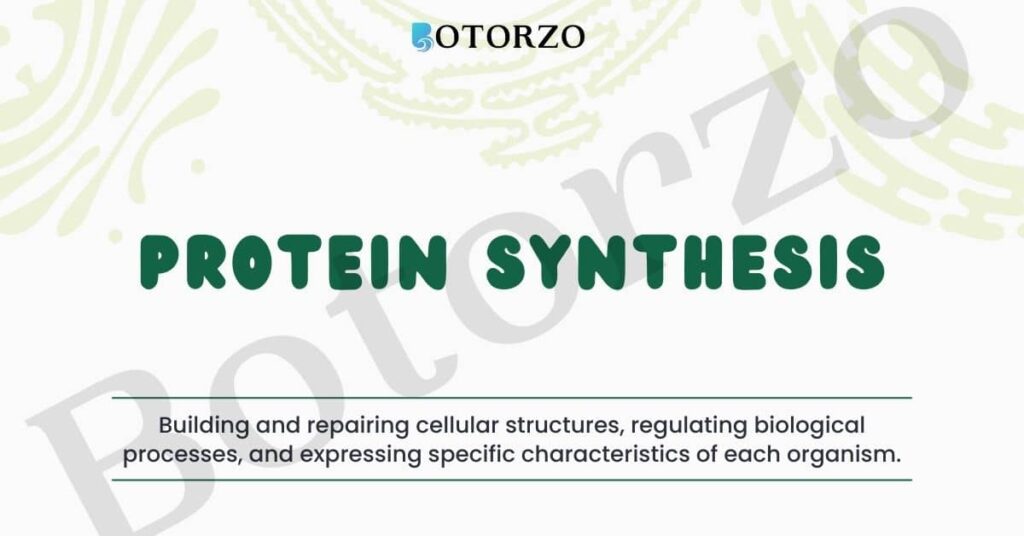
| Characteristic | Smooth Endoplasmic Reticulum (SER) | Rough Endoplasmic Reticulum (RER) |
|---|---|---|
| Structure | Membrane-bound tubules and vesicles | Membrane-bound tubules and vesicles |
| Appearance | Smooth surface | Appears rough due to ribosomes |
| Main Functions | Lipid molecule synthesis | Protein synthesis |
| Role in Membrane Biogenesis | Essential for lipid production | Involved in the formation of the cell membrane |
| Transport of Materials | Facilitates material transport within the cell and between the cytoplasm and nucleus | Functions as a transport network for materials, especially proteins |
| Presence in All Active Cells | Present | Present |
| Variation in Appearance Across Cell Types | Variations among different cell types | Varies among different cell types |
| Detoxification (in Vertebrate Liver Cells) | Critical role in detoxifying toxins and drugs | Not associated with detoxification |
Smooth endoplasmic reticulum (S.E.R)
The smooth surface of the tubules and vesicles that are membrane-bound make up the Smooth Endoplasmic Reticulum (SER). Lipid synthesis, which is essential for cellular processes and membrane formation, is its primary function. Additionally, SER acts as a network for the internal and inter-cytoplasmic transport of materials, including proteins, within the cell. It can appear differently in different cell types and is found in all living cells. SER is essential for liver cell detoxification in vertebrates.
Rough Endoplasmic Reticulum (R.E.R)
Similar in structure, the Rough Endoplasmic Reticulum (RER) gets its rough appearance from ribosomes on its surface. Its primary sites are ribosomes, and it specialises in protein synthesis. RER plays a role in the synthesis and intracellular distribution of proteins. Similar to SER, it can be found in all living cells and varies in appearance depending on the type of cell. RER, on the other hand, is mostly concerned with protein-related functions and is not connected to detoxification processes.
Golgi apparatus
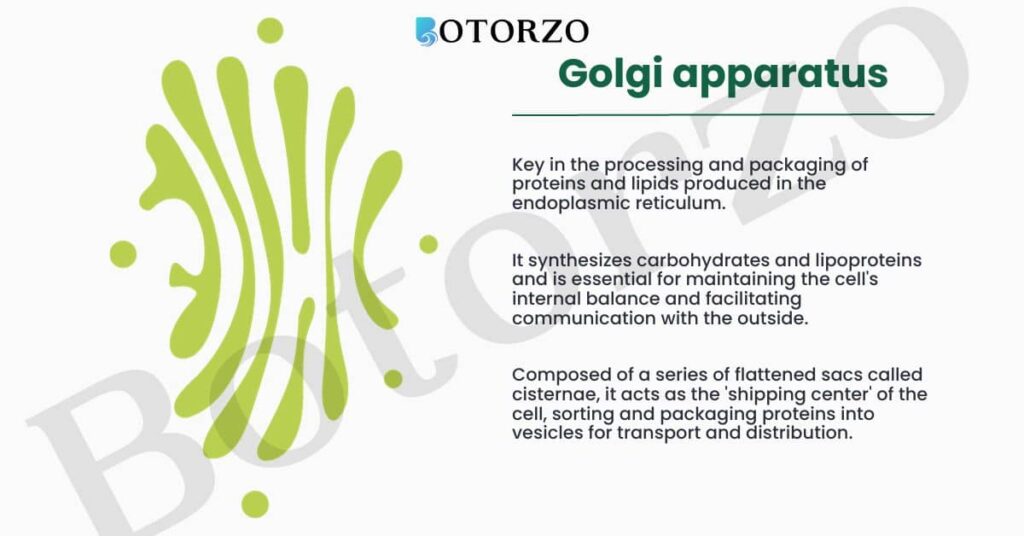
The Golgi apparatus is an essential cellular organelle made up of membrane-bound vesicles stacked in what are known as cisterns. It was first described by Camillo Golgi. These compressed sacs are a crucial component of the complex cellular membrane system, lining up roughly parallel to one another. The cellular membrane network is made more complex by the connections that these membranes notably make with those of the endoplasmic reticulum (ER).
One of its significant roles is in the formation of lysosomes, which are membrane-bound sacs containing digestive enzymes. Lysosomes are vital for the cell’s waste disposal and recycling system. The Golgi apparatus prepares and assembles these enzymes within lysosomes, ensuring their proper functionality. In essence, the Golgi apparatus serves as a central hub for processing and organizing a wide range of cellular materials and plays a crucial part in maintaining the cell’s overall functionality.
Lysosomes

From a structural standpoint, lysosomes are membrane-bound sacs loaded with digestive enzymes. The rough endoplasmic reticulum (RER) produces these enzymes, which are essential to lysosomal processes. Lysosomes contribute to the preservation of cellular cleanliness by acting as the body’s waste disposal mechanism. They are primarily responsible for breaking down foreign objects and exhausting cell organelles—processes vital to the cell’s overall health.
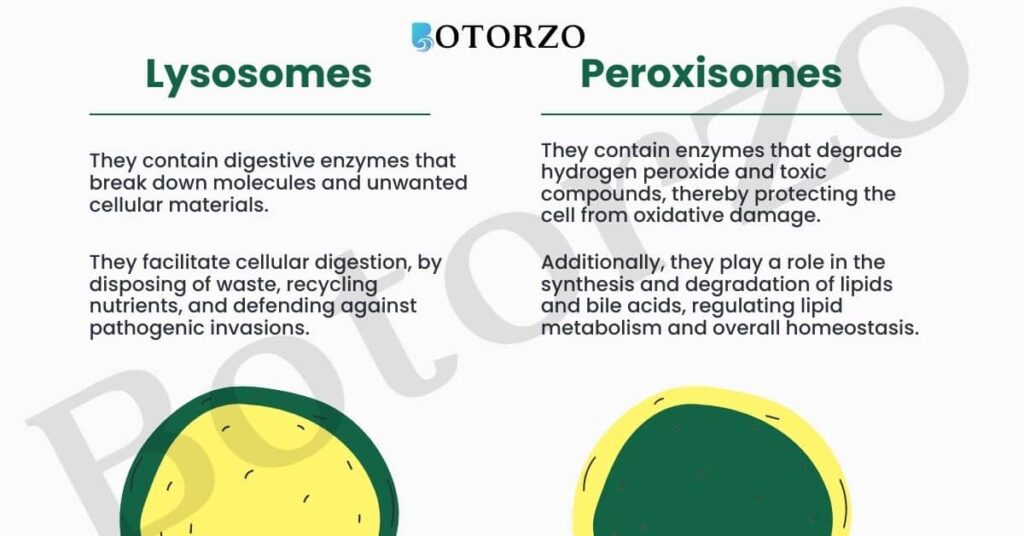
Strong digestive enzymes that can break down a variety of organic materials are present in lysosomes, which enable them to carry out their waste disposal function by dissolving complex substances into simpler ones. But in some cases of cellular disruption, like damage, lysosomes burst, releasing these enzymes that can accidentally break down their own host cell. Lysosomes have come to be known as “suicide bags” as a result of this phenomenon, highlighting their important but potentially harmful function within the cell.
Mitochondria
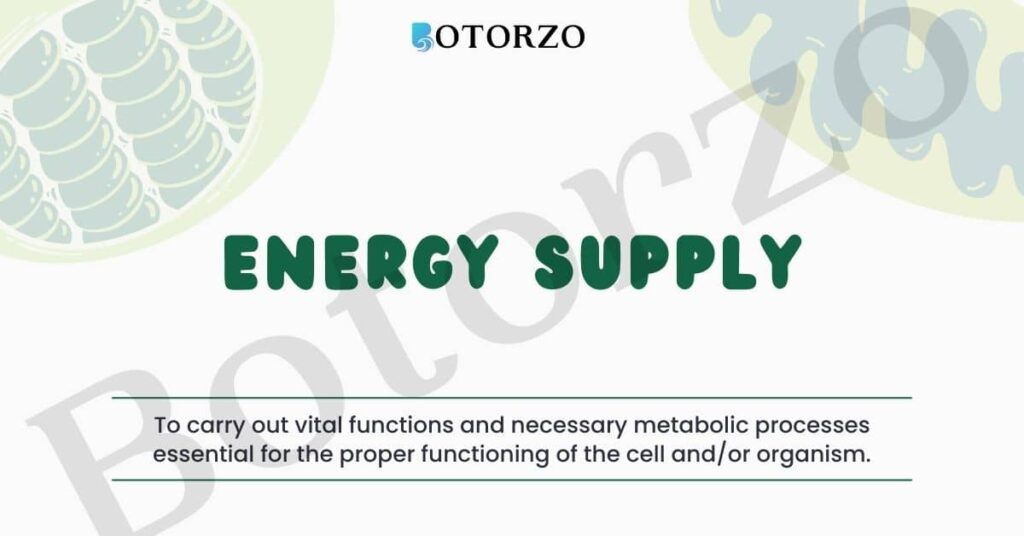
Known as the powerhouses of the cell, mitochondria have a special structural makeup. Two separate membrane coverings envelop them; the outer membrane exhibits porosity, and the inner membrane takes the form of complex folds. The important function of these folds is to greatly increase the surface area that is available for the chemical reactions that produce adenosine triphosphate (ATP), also referred to as the cell’s energy currency.
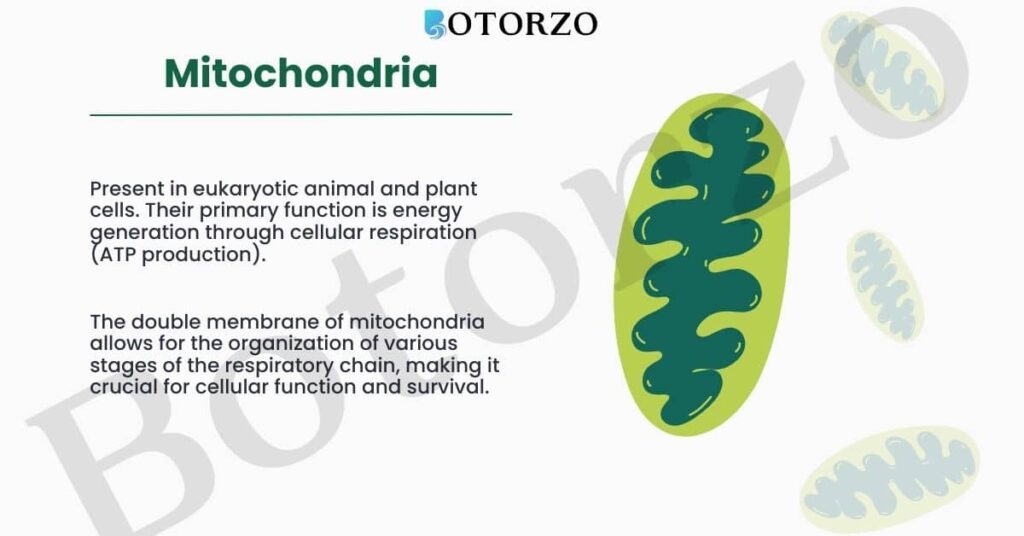
In order to release the energy needed for the numerous essential chemical processes required to maintain life, mitochondria are essential. The cell can use the ATP molecules that are created when this energy is harnessed as a useful resource. The main energy source for the synthesis of new chemical compounds and the maintenance of mechanical function in cells is ATP. The fact that mitochondria have their own DNA and ribosomes makes them unique among organelles. Because of this special quality, mitochondria can manufacture some of their own proteins, which adds an interesting dimension to their complex role in cellular function.
Plastids
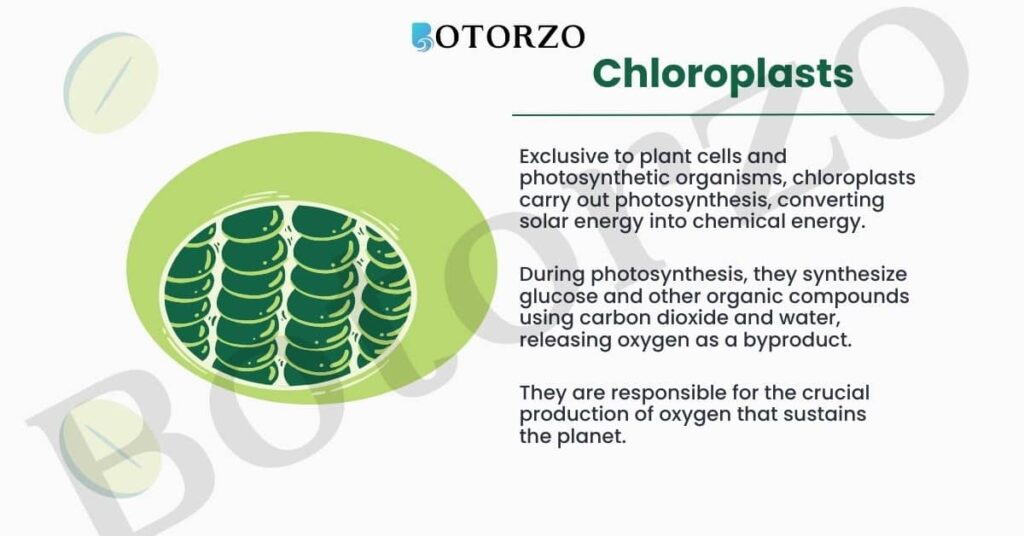
- Chromoplasts
- Chloroplasts
- Leucoplasts
Plant cells are unique from animal cells because they contain plastids. There are two different types of plastids: leucoplasts, which are usually white or colourless, and chromoplasts, which are distinguished by their vivid pigments. Chloroplasts, as the name suggests, are specific types of chromoplasts that hold the green pigment chlorophyll. Since chloroplasts are in charge of absorbing light energy and transforming it into chemical energy, they are crucial to the process of photosynthesis in plants. Chloroplasts contain more pigments that are yellow or orange in addition to chlorophyll, which broadens the spectrum of light absorption.
Leucoplasts, on the other hand, function mainly as cellular storage organelles. These specialised plastids store nutrients and energy reserves for the plant by acting as storage for materials like oils, starch, and protein granules. The interior structure of chloroplasts is an elaborate arrangement of multiple membrane layers that are encased in a material called the stroma. They resemble mitochondria in some structural details from the outside. Additionally, just like mitochondria, plastids have their own DNA and ribosomes, which gives them the special ability to independently synthesis some proteins and continue to perform vital functions inside plant cells.
| Characteristic | Chromoplasts | Chloroplasts | Leucoplasts |
|---|---|---|---|
| Type of Plastid | Coloured Plastids | Green-coloured Plastids | Colourless or White Plastids |
| Presence | In plant cells | In plant cells | In plant cells |
| Pigments | Contain various pigments, such as yellow or orange pigments, in addition to chlorophyll | Contain chlorophyll as the primary pigment | Largely devoid of pigments |
| Role in Photosynthesis | Not directly involved in photosynthesis but may contribute to fruit and flower coloration | Crucial for photosynthesis, capturing light energy and converting it into chemical energy | Not involved in photosynthesis, primarily serving as storage organelles for starch, oils, and protein granules |
| Internal Structure | Varied, with pigments and coloration components | Contains numerous membrane layers within the stroma | Contains storage materials, organized for long-term storage |
| Similarities to Mitochondria | Limited external structural similarities | Limited external structural similarities | Limited external structural similarities |
| Independent DNA and Ribosomes | Possess their own DNA and ribosomes | Possess their own DNA and ribosomes | Possess their own DNA and ribosomes |
| Main Functions | Contributing to the coloration of fruits and flowers | Capturing light energy for photosynthesis and producing ATP | Storing materials such as starch, oils, and protein granules |
chromoplasts
- Type of Plastid: Coloured Plastids
- Presence: In plant cells
- Pigments: Contain various pigments, such as yellow or orange pigments, in addition to chlorophyll
- Role in Photosynthesis: Not directly involved in photosynthesis but may contribute to fruit and flower coloration
- Internal Structure: Varied, with pigments and coloration components
- Similarities to Mitochondria: Limited external structural similarities
- Independent DNA and Ribosomes: Possess their own DNA and ribosomes
- Main Functions: Contributing to the coloration of fruits and flowers
chloroplasts
- Type of Plastid: Green-coloured Plastids
- Presence: In plant cells
- Pigments: Contain chlorophyll as the primary pigment
- Role in Photosynthesis: Crucial for photosynthesis, capturing light energy and converting it into chemical energy
- Internal Structure: Contains numerous membrane layers within the stroma
- Similarities to Mitochondria: Limited external structural similarities
- Independent DNA and Ribosomes: Possess their own DNA and ribosomes
- Main Functions: Capturing light energy for photosynthesis and producing ATP
Leucoplasts
- Type of Plastid: Colourless or White Plastids
- Presence: In plant cells
- Pigments: Largely devoid of pigments
- Role in Photosynthesis: Not involved in photosynthesis, primarily serving as storage organelles for starch, oils, and protein granules
- Internal Structure: Contains storage materials, organized for long-term storage
- Similarities to Mitochondria: Limited external structural similarities
- Independent DNA and Ribosomes: Possess their own DNA and ribosomes
- Main Functions: Storing materials such as starch, oils, and protein granules
Vacuoles

Essential storage sacs for the solid and liquid components of a cell are called vacuoles. Notably, plant and animal cells differ in their size and importance. Animal cells typically have relatively small vacuoles, but the vacuoles in plant cells are remarkably large. In some plant cells, the volume of the central vacuole can make up between 50% and 90% of the cell. Cell sap is the main substance that fills plant cell vacuoles, giving the cell its rigidity and turgidity. A range of materials essential to plant cell life, such as sugars, different organic acids, amino acids, and specific proteins, are also stored in these vacuoles.

Furthermore, the food vacuole—which holds the food items that have been consumed—plays a crucial role in the case of single-celled organisms like amoeba. Certain unicellular organisms have specialized vacuoles that aid in vital processes like excreting extra water and getting rid of specific waste products from the cell. The ability of each cell to carry out vital tasks like respiration, nutrient uptake, waste elimination, and protein synthesis is attributed to the dynamic organization of vacuoles and the particular coordination of membranes and organelles. As a result, the cell is the basic structural unit of all living things, acting as both the building block and the essential functional unit of life.
Read Engineering From Engineeringdda.in
F.A.Q’S
What are cell organelles, and why are they important in cells?
Cell organelles are specialized, membrane-bound structures within cells that perform various functions, such as protein synthesis, energy production, and waste disposal. They are essential for maintaining cell structure and function.
What is the primary function of the endoplasmic reticulum (ER) in a cell?
The ER is involved in protein synthesis, lipid production, and material transport within the cell.
How do smooth and rough endoplasmic reticulum (SER and RER) differ in structure and function?
The SER primarily synthesizes lipids and aids in material transport, while the RER is responsible for protein synthesis and plays a role in cell membrane formation.
Why are lysosomes sometimes referred to as “suicide bags” of a cell?
Lysosomes contain powerful digestive enzymes that can break down organic material. In cases of cellular damage, lysosomes may rupture, causing the cell to digest itself, earning them this nickname.
What makes mitochondria the “powerhouses” of the cell?
Mitochondria produce ATP, the cell’s energy currency, supporting various cellular activities.
How do plastids, such as chloroplasts and leucoplasts, contribute to plant cell function?
Chloroplasts are essential for photosynthesis, converting light energy into chemical energy. Leucoplasts act as storage organelles for nutrients and energy reserves in plant cells.
Why do plant cells have larger vacuoles compared to animal cells?
Plant cells have large vacuoles to store cell sap, providing rigidity and aiding in the storage of essential compounds like amino acids, sugars, and organic acids.
What is the primary function of the central vacuole in plant cells?
The central vacuole stores cell sap and vital substances, aiding plant health and function.

